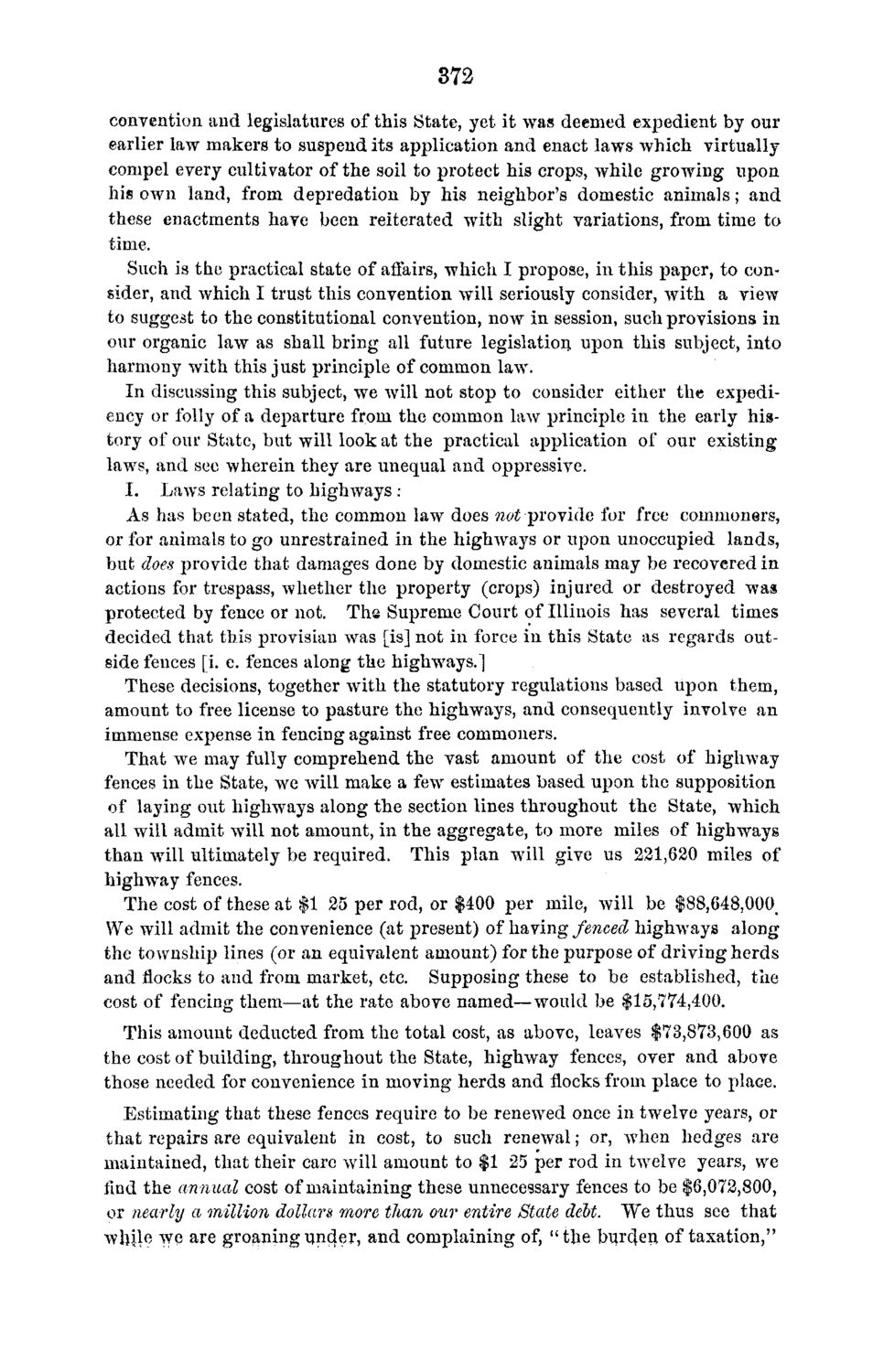| |
| |
Caption: Board of Trustees Minutes - 1870
This is a reduced-resolution page image for fast online browsing.

EXTRACTED TEXT FROM PAGE:
372 convention and legislatures of this State, yet it was deemed expedient by our earlier law makers to suspend its application and enact laws which virtually compel every cultivator of the soil to protect his crops, while growing upon his own land, from depredation by his neighbor's domestic animals; and these enactments have been reiterated with slight variations, from time to time. Such is the practical state of affairs, which I propose, in this paper, to consider, and which I trust this convention will seriously consider, with a view to suggest to the constitutional convention, now in session, such provisions in our organic law as shall bring all future legislation upon this subject, into harmony with this just principle of common law. In discussing this subject, we will not stop to consider either the expediency or folly of a departure from the common law principle in the early history of our State, but will look at the practical application of our existing laws, and see wherein they are unequal and oppressive. I. Laws relating to highways : As has been stated, the common law does not provide for free commoners, or for animals to go unrestrained in the highways or upon unoccupied lands, but does provide that damages done by domestic animals may be recovered in actions for trespass, whether the property (crops) injured or destroyed was protected by fence or not. The Supreme Court of Illinois has several times decided that this provisian was [is] not in force in this State as regards outside fences [i. e. fences along the highways.] These decisions, together with the statutory regulations based upon them, amount to free license to pasture the highways, and consequently involve an immense expense in fencing against free commoners. That we may fully comprehend the vast amount of the cost of highway fences in the State, we will make a few estimates based upon the supposition of laying out highways along the section lines throughout the State, which all will admit will not amount, in the aggregate, to more miles of highways than will ultimately be required. This plan will give us 221,620 miles of highway fences. The cost of these at $1 25 per rod, or $400 per mile, will be $88,648,000. We will admit the convenience (at present) of having fenced highways along the township lines (or an equivalent amount) for the purpose of driving herds and flocks to and from market, etc. Supposing these to be established, the cost of fencing them—at the rate above named—-would be $15,774,400. This amount deducted from the total cost, as above, leaves $73,873,600 as the cost of building, throughout the State, highway fences, over and above those needed for convenience in moving herds and flocks from place to place. Estimating that these fences require to be renewed once in twelve years, or that repairs are equivalent in cost, to such renewal; or, when hedges are maintained, that their care will amount to $1 25 per rod in twelve years, we find the annual cost of maintaining these unnecessary fences to be $6,072,800, or nearly a million dollars more than our entire State debt. We thus see that while we are groaning un^er, and complaining of, "the burc]en of taxation,"
| |